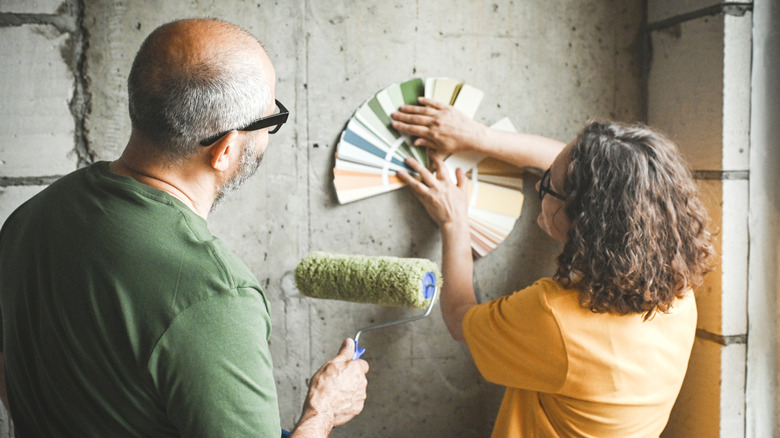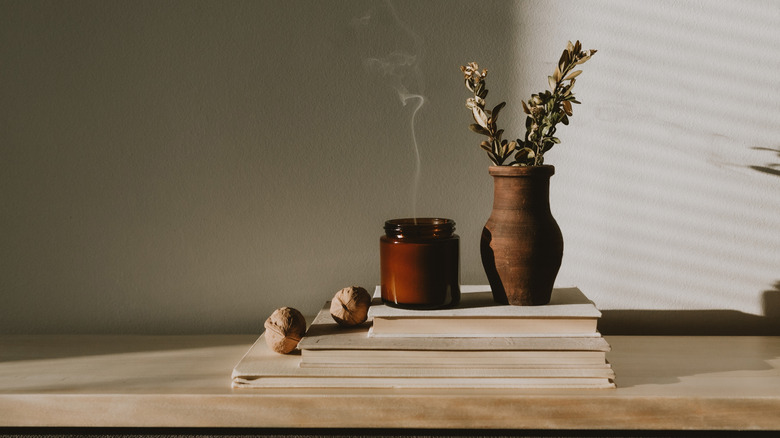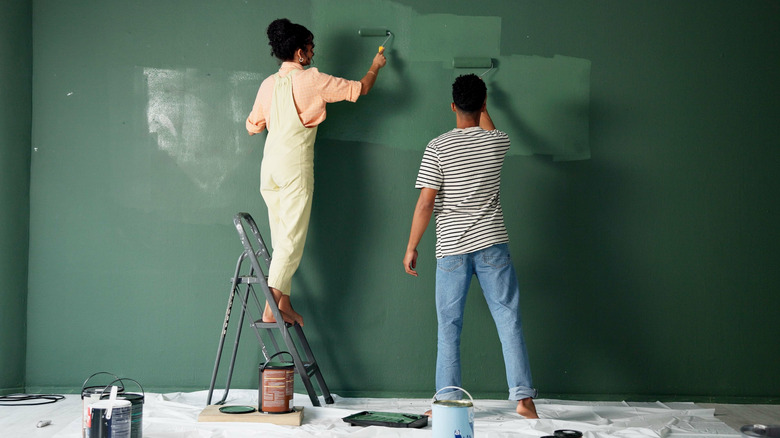The Neutral Paint Color You Used To See Everywhere Is Officially Out
Neutral paint colors are a mainstay in interior design, and for good reason. These mellow tones blend right into the background and won't clash with other accents throughout the space, so they give you the flexibility to play around with your style without having to make any major changes. They're also perfect to use if you're trying to create a relaxing living space — subtle shades that aren't shocking to the eyes are much more zen than bold colors that demand your attention.
With that being said, however, they do have their occasional downsides. Neutrals are often seen as bland, and shades that were once-popular picks start to feel uninspired after they've been trending for a while. Such is the case with greige, a portmanteau of gray and beige that has dominated interiors for years thanks to its flexibility.
Because this shade is a combination of gray and beige, it's a neutral to rule all neutrals. It doesn't have any aggressively warm or cool undertones, meaning it will blend well with a space regardless of the chosen color palette, and it's not as bright or hard to maintain as a true white. Designers heralded it as the go-to choice for years, but now that it's been used to coat the walls of just about every house and apartment, people are itching for a color that has a more personalized flair.
Why greige is no longer trending
Recently, trends have started to move away from cookie-cutter, universally pleasing design and towards spaces with more personality. With that, of course, comes bolder design decisions. Greige's heyday was during a time when design was seen as somewhat formulaic, and no color is more unoffensive than the king of all neutrals. It can work with warm or cool colors, it's bright enough for dark spaces, and no renter is going to turn their nose up at an apartment because of a wall color that's barely even noticeable. It looks good in just about every room, but the problem is that it will never make enough of an impact to earn the moniker of "great."
In an Instagram post, designer Zoie Brook shared exactly why she thinks greige is officially over. "These overly safe, muted tones are being swapped for warmer, earthier neutrals that bring more depth and character," she said. Design should be about creating a space that feels true to you and makes you happy to exist in it, and when we consider the "dopamine decor" trend that's taking over TikTok, this typically involves bringing in more bright colors, personal accents, and bold patterns that showcase your personality rather than flattening it. In short, greige is the safe route, but constantly playing it safe is a surefire way to end up with a space that doesn't reflect your personality at all.
Alternatives to greige paint
Even if you've decided you're ready to ditch greige for good, it doesn't mean that you have to immediately paint your room fire engine red or neon yellow. There are still plenty of neutrals out there that can create the same soothing effect, just with a bit more interest and depth. Biophilic design is a major trend at the moment, so consider leaning towards colors that mimic nature in order to bring the outdoors in. Deeper brown shades, like Pantone's stunning Color of the Year, Mocha Mousse, can help cozy up a room, while a light sage green is a more refreshing alternative that's perfect if you want to reflect more light around the space.
The downside to greige is that it doesn't have much personality, so if you're trying to break out of this mold, your final color decision should align with what you truly enjoy. Look to the accents in your home or even the clothes in your closet if you need help determining what colors you gravitate towards the most, and consider what effect you want to create in the space. Light colors will help to make a room feel large and airy, while darker shades are the key to a cozy, moody look. You can even delve into color psychology if you're trying to curate a specific mood.
While venturing out from the safe zone might feel intimidating at first, it's the only way to design a room that is actually reflective of your personal style. As long as you stay true to your own tastes, you're sure to end up with a final product you love.


